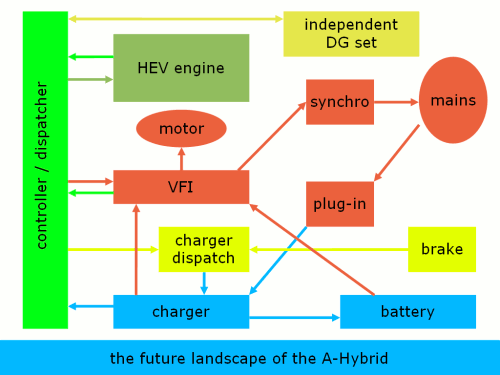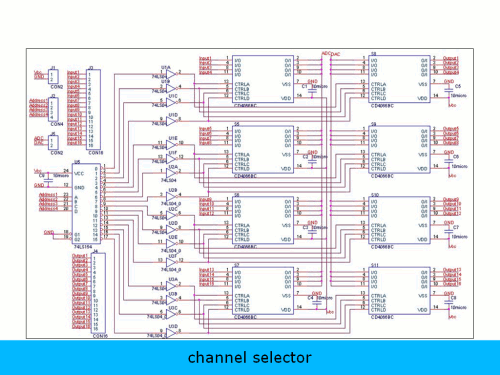| |
NOTES ON ITEMS PRESENTED ABOVE
| * |
The market is craving for an efficient small car on the belief that
something small is essentially efficient because it has a high mileage
|
| * |
My design is for the internal combustion engine to be much
smaller than it is today, and I will reveal how I would calculate
the engine size during a serious engineering discussion
|
| * |
Very definitely, the acceleration of this vehicle will be less, but
I will show during that engineering discussion that the acceleration
of this small car will be the envy of the simple small car
|
| * |
When the grid rates are lower than the production cost of the
hybrid, then plug it into the grid
|
| * |
When the grid FEED-IN rates are better than the production cost of
the hybrid, then run the inverters to feedback to the electric grid
|
First 3-Phase Electric Run
| * |
This establishes proof that the design of the "3-phase
sinusoidal variable-frequency, variable-voltage,
variable-current" (VFI) is working and may now be
scaled for much larger capacities
|
| * |
This existing implementation is able to operate at frequencies
from 10 Hz to 120 Hz, and the limitation is established by the
components used
|
| * |
The design is able to generate any number of "electrical phases"
and "electrical angles", using a single motherboard
The design is also scalable to any capacity, any voltage source,
and any output voltage
|
| * |
The motor is the cost-effective old reliable and readily
available off-the-shelf 3-phase squirrel-cage induction motor
|
| |
- |
This video was taken while the control electronics was on the
bench, and the vehicle was connected via a 3-wire umbilical cord
|
| |
- |
Beyond the vehicle propulsion, the VFI may also be used to
provide variable-speed drives in factories, drive pumps for
irrigation, become a general-purpose AC source in integrated
renewable energy applications for homes, buildings,
hospitals, factories, and so on
|
Load of the Internal Combustion Engine and Fuel Consumption
| * |
I impose two rules in this regard, namely,
|
| * |
RULE NO 1 - On the operation of the internal combustion engine
|
| * |
RULE NO 2 - On the operation of the electric motor
|
| * |
I am prepared to discuss these two rules in detail during the
serious engineering discussion that I mentioned above
|
SCALABLE 3-Phase Sinusoidal Variable-Frequency,
Variable-Voltage, Variable-Current
| * |
The motherboard of the VFI is designed to be scalable to ANY motor
size, ANY input/output voltage, ANY number of phases, and
ANY practicable frequency
|
| * |
Only the chips will be re-programmed for changes in phase angles and
number of phases
|
| * |
This means that the batteries must have enough storage capacity
(bigger than would be used in other designs) and the
"controller/dispatcher computer" must be programmed to allow for
enough battery storage to accept this extra load
|
| * |
SCALABLE - The controls of this hybrid design is scalable
1 - from a small car - Standard controls and
programs, with "set-points" calibrated for the
operating conditions of the system
2 - to a larger vehicle - Same as #1, except that the
actuators are rated with higher torques, currents
and voltages
3 - to a diesel-fired bus - Same as #2, except that there
is a procedure to control the temperature of the
combustion chamber, so that the diesel engine is
started with the minimum of emission
4 - to a co-generation bus - This is the EPITOME of
engineering design, where the waste heat
(which is FREE ENERGY) is used to do work.
I have further views regarding Co-Generation in
buses, and I will share these during the
engineering discussion




|
|